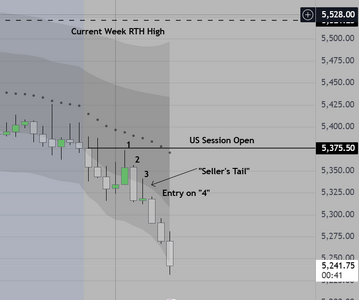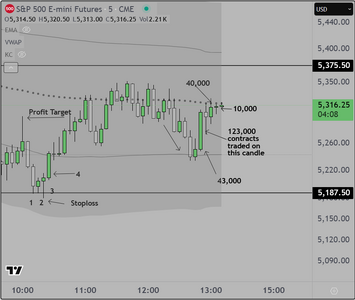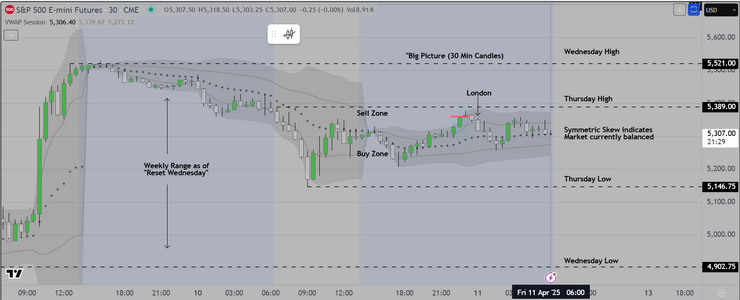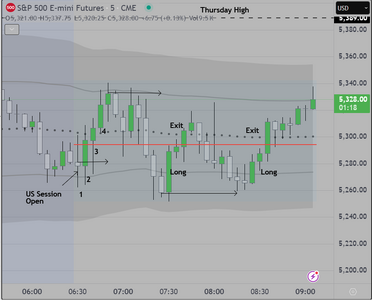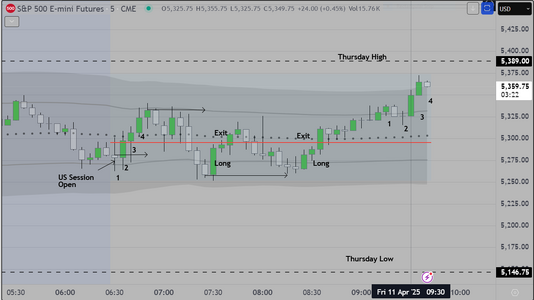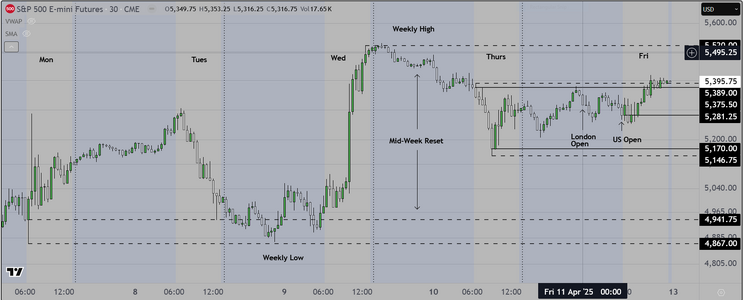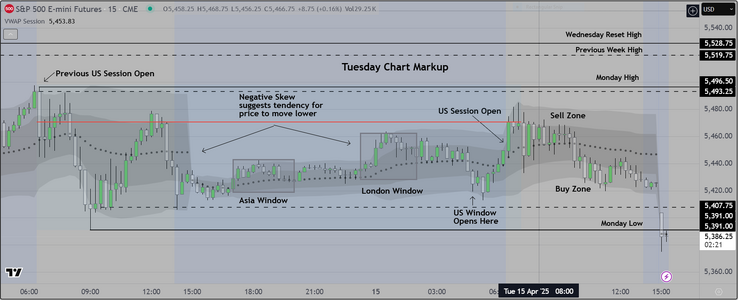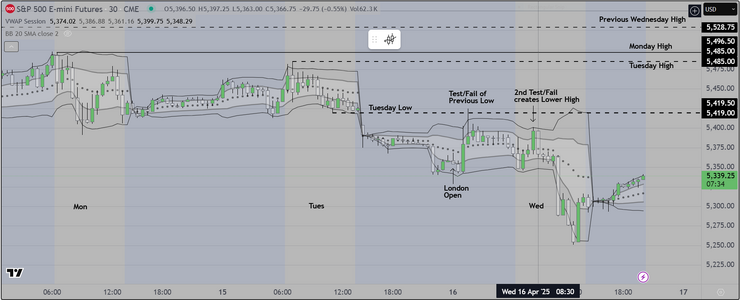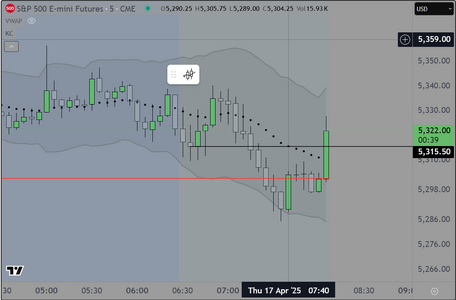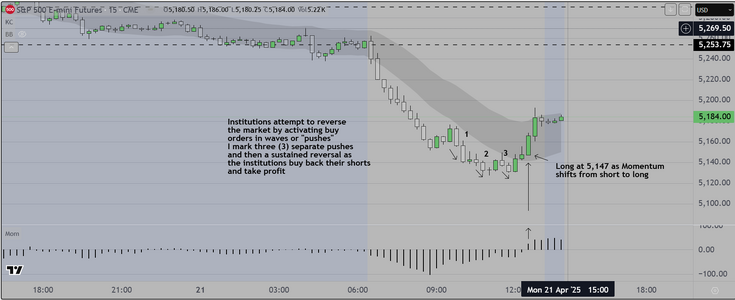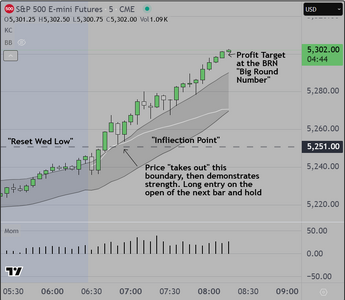Hello UK readers
This week I completed testing of two (2) simplified systems meant
to assist retail traders who find themselves struggling. One is a scalping
system, based on 2 minute candles, the other a swing trading system,
based on 15 minutes candles. Both have a significant edge if operated
in a disciplined manner. This week and for the next month I will trade
the small S&P futures (MES) and this will serve as a "live" forward test
My mentor suggested that a good system should be able to be documented
on a single handwritten page, and that is what I have done. I think he would
be pleased.
Time permitting, I will post the results of each day's trading with context as follows
1) I use a framing system based on a weekly cycle. The first two days (Mon-Tues)
serve as the basis, the system looks at the high-low range and assumes that
institutions are accumulating inventory at "wholesale" values, and dispersing it
at "retail" values and vice versa.
2) The process of accumulating & dispersing inventory is known as "trapping"
that is to say, the large institutions move the market in such a way as to motivate
"other" (other meaning "higher" time frame) participants to be "trapped into"
losing positions, and "trapped out of" winning positions. In both cases, they benefit
as the trapped participants have to decide when/where to adjust by scaling in/out.
3) The decision making process starts during the weekend, with analysis of "What Worked"
and review of Pending Economic News. This allows us to forecast the next week's price
action in terms of probable outcomes. We assign percentages to each outcome and direction.
Prior to the open of each NY session, we review the actual effect of Economic News and make
adjustments as necessary. We make final adjustments to our screen display and we
begin our trading day.
Objectives
Daily
For the scalping system, our objectives are to make a series of small trades using volatility based
tools. We look for two (2) scalps beginning at 2pm London time, and one (1) more trade beginning
at 6pm London. We would shut down for the day, if two consecutive trades were losses.
For the Swing system, our objectives are to make two (2) trades, good for a minimum of +10 points
each, at any time after the first 30 minutes. Because the statistical edge for this system is significant,
we would NOT shut down if the first trade were a loser. Instead we would consider scaling in higher or
lower, or alternatively, we would take a loss and move on the next setup.
Setups
The basic setups are entry relative to a key reference. That is to say, we look for a close above or below
a key reference as a point of entry. This can occur in the context of a 1-2-3 algo where candle "4" opens
above or below the key reference.. We also look for 2nd entries, known as H2/L2. We have spoken about
these previously. Finally, we also count "legs" and we look for entries at "leg 2"
Good luck

